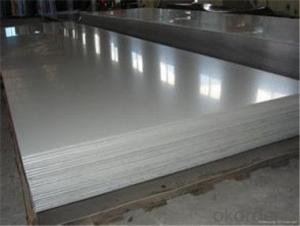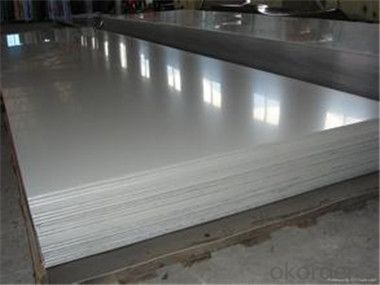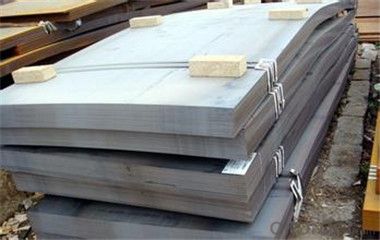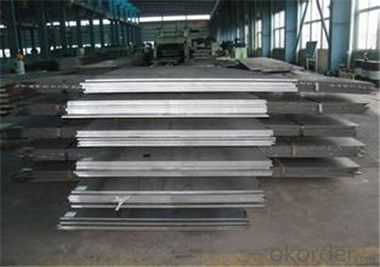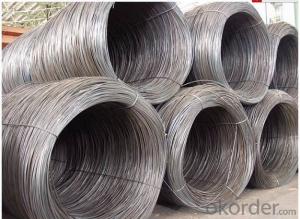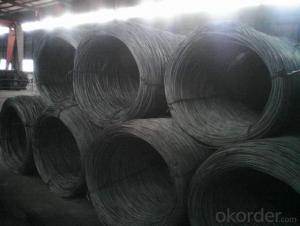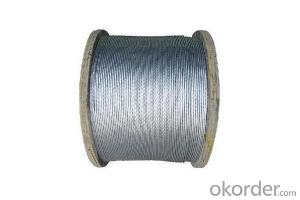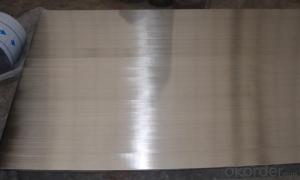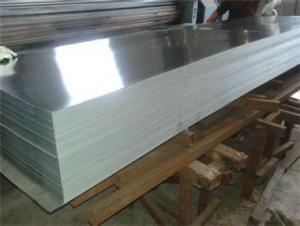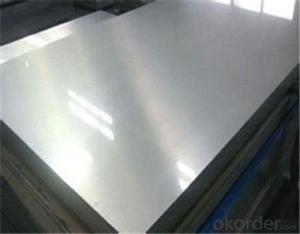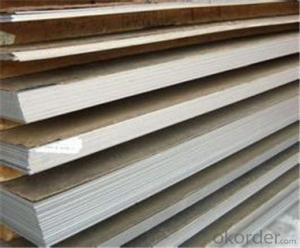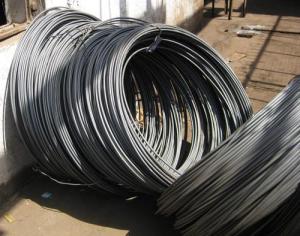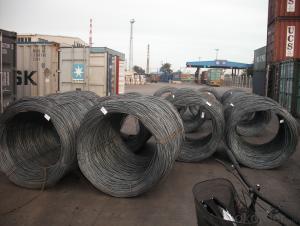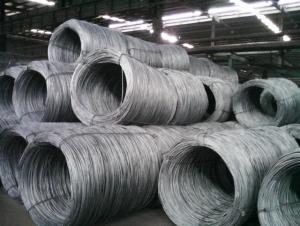Stainless Steel Sheet SS304 with Best Quality in China
- Loading Port:
- Tianjin
- Payment Terms:
- TT OR LC
- Min Order Qty:
- 50 m.t.
- Supply Capability:
- 45555555 m.t./month
OKorder Service Pledge
OKorder Financial Service
You Might Also Like
Specification
Description of stainless steel plate:
stanless steel sheet roll
Manufacturer since 2003;
Origin from Baosteel & Tisco;
100% Manufacture's direct deal.
Festures of stainless steel plate:
| Packaging Details: | standard packing to export 4 eye bands and 3 circumferential bands in steel, galvanized metal fluted rings on inner and outer edges, galvanized metal & waterproof paper wall protection disk, galvanized metal & waterproof paper around circumference |
| Delivery Detail: | 15-25 days after received your deposit or to your quantity |
Specifications of stainless steel plate:
Product Name | cr 1219x2438 stanless steel sheet 201 |
standared | JIS, AISI, ASTM, GB, DIN,SUS |
Thickness | 0.2mm~2.5mm |
Size | 1000*2000mm,1219*2438mm or as per customers' request |
Surface finish | 2B, BA, Hair Line, No.1,No.4, Mirror Finish |
Application | Kitchenware, decoration construction and building ornament, product parts manufacturing and stainless steel products tooling and so on |
Payment terms | T/T 30% for deposit, Balance against the copy of B/L; or L/C at sight |
Product Packing | wooden pallet |
Delivery time | within 15-20 working days after we got your 30% deposit |
Attention | FREE SAMPLES can be sent on request. We promise to provide our valued clients with high quality products, low price, and excellent client services. |
Images of stainless steel plate:
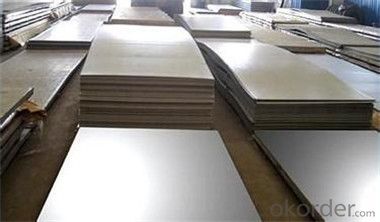
FAQ:
1. What is your package?
Packing situation: standard seaworthy packing or as customer required.
2. How long is the lead time?
Delivery time: 45 days after order confirmed.
3. What payment term do you accept?
Payment: T/T or L/C at sight.
- Q: What are the standard specifications for steel wire rod?
- The standard specifications for steel wire rod vary depending on the industry and the specific application. However, there are some general standards and specifications that are commonly followed. The most common standard for steel wire rod is the American Society for Testing and Materials (ASTM) standard. ASTM A510/A510M is the standard specification for general requirements for wire rods and coarse round wire, carbon steel. This standard covers the general requirements for carbon steel wire rods and coarse round wire, including chemical composition, mechanical properties, dimensions, and tolerances. In terms of chemical composition, the standard specifies the maximum limits for carbon, manganese, phosphorus, and sulfur content. These limits ensure that the steel wire rod has the required strength, ductility, and other mechanical properties. The mechanical properties of steel wire rod are also specified in the standard. This includes the minimum yield strength, tensile strength, and elongation. These properties determine the ability of the wire rod to withstand applied forces and deformation without breaking or failing. The dimensions and tolerances for steel wire rod are also outlined in the standard. This includes the diameter, length, and straightness of the wire rod. The standard provides guidelines for the acceptable deviations from the specified dimensions to ensure consistency and quality. In addition to the ASTM standard, there are other industry-specific standards that may be followed depending on the intended application of the steel wire rod. These standards may specify additional requirements or properties that are relevant to the specific industry or application. Overall, the standard specifications for steel wire rod encompass a range of factors including chemical composition, mechanical properties, dimensions, and tolerances. These specifications ensure that the steel wire rod meets the required quality and performance standards for its intended use.
- Q: How is steel wire rod used in the manufacturing of wire mesh cable trays?
- Steel wire rod is used in the manufacturing of wire mesh cable trays as it serves as the primary material for creating the interwoven mesh structure. The wire rod is drawn, stretched, and shaped to form individual wires that are then woven together to create a strong and durable mesh. This mesh structure provides excellent support and containment for cables, ensuring their organized and safe installation in various industrial and commercial settings.
- Q: How is steel wire rod packaged for transportation and storage?
- Steel wire rod is typically packaged for transportation and storage in coils or bundles. The wire rod is wound into large coils, which are then secured with steel straps or wires. Alternatively, smaller bundles may be created by grouping several rods together and wrapping them with plastic or steel straps. This packaging ensures ease of handling, prevents damage during transit, and allows for efficient storage in warehouses or yards.
- Q: What are the common tensile strengths of steel wire rod?
- The specific grade and composition of the steel determine the common tensile strengths of steel wire rods, which can vary. Steel wire rods typically have tensile strengths ranging from 500 MPa to 2000 MPa. It is worth mentioning that these values are approximations and may slightly differ based on factors like the manufacturing process and the application of the steel wire rod. Furthermore, different industries may have varying standards and demands for tensile strength, so it is advisable to refer to the appropriate standards and specifications for precise information.
- Q: What are the different types of wire ropes made from steel wire rod?
- Steel wire rod can be used to create various types of wire ropes, each with its own purpose and function. Some commonly used types include: 1. Galvanized Wire Ropes: To protect against corrosion in outdoor and marine settings, these wire ropes are coated with zinc using a process called galvanization. 2. Stainless Steel Wire Ropes: These wire ropes are made from high-quality stainless steel, providing exceptional corrosion resistance even in harsh conditions. They are popular in industries like marine, food processing, and pharmaceuticals. 3. Bright Wire Ropes: Also known as ungalvanized wire ropes, these ropes are made from plain steel wire rods without any protective coating. They are typically used in static applications where corrosion resistance is not a concern. 4. Plastic Coated Wire Ropes: For added protection against corrosion and abrasion, these wire ropes have a layer of plastic coating applied over the steel core. They are commonly used in applications like gym equipment and hoisting cables. 5. Compacted Wire Ropes: By compacting the strands, these wire ropes have reduced gaps between them, resulting in increased strength and durability. They are frequently used for heavy lifting operations and crane applications. 6. Rotation Resistant Wire Ropes: Designed to minimize twisting and rotation under heavy loads, these wire ropes have special strand and core configurations. They are ideal for applications like suspension bridges and tower cranes that require precise control and stability. 7. Wire Ropes with Fiber Core: These wire ropes have a core made of natural or synthetic fibers like sisal or polypropylene. The fiber core provides flexibility and cushioning, making them suitable for applications that require shock absorption, such as elevators and ski lifts. Choosing the right wire rope depends on various factors like the environment, load requirements, and intended application since each type has its own unique properties and advantages.
- Q: What are the main factors influencing the choice of steel wire rod production process?
- The choice of steel wire rod production process is influenced by several key factors. Firstly, the quality requirements of the final product play a crucial role. Different production processes have varying capabilities to produce steel wire rods with specific properties such as strength, ductility, and surface finish. The desired characteristics of the wire rod will dictate the choice of production process. Secondly, the cost-effectiveness of the production process is an important consideration. Factors such as energy consumption, raw material utilization, and labor requirements can significantly impact the overall cost of production. Different processes may have varying efficiencies and costs, and these factors need to be evaluated to ensure the most economical choice. Furthermore, the availability and cost of raw materials also influence the selection of the production process. Steel wire rod can be produced from different types of steel, such as carbon steel, alloy steel, or stainless steel. The choice of raw material depends on factors such as required mechanical properties, availability, and cost. The production process must be compatible with the selected raw material. Another factor influencing the choice is the production capacity and scalability of the process. Some processes may be more suitable for small-scale production, while others are better suited for large-scale manufacturing. The desired production volume and scalability requirements need to be considered to ensure the chosen process can meet the production demands. Additionally, environmental considerations can also impact the choice of production process. Some processes may generate more waste or emit higher levels of pollutants compared to others. Companies may prioritize sustainable and environmentally friendly production methods, leading them to select a process that minimizes environmental impact. Overall, the main factors influencing the choice of steel wire rod production process are the desired product quality, cost-effectiveness, availability and cost of raw materials, production capacity and scalability, and environmental considerations. A careful evaluation of these factors is necessary to select the most suitable production process for a specific application.
- Q: How are steel wire rods used in the production of electrical wires for conducting electricity?
- Steel wire rods are used in the production of electrical wires as the core material for conducting electricity. The rods are drawn through a series of dies to reduce their diameter and increase their length. This process, known as wire drawing, creates a smooth and uniform wire that is then coated with an insulating material, such as PVC or rubber, to ensure electrical safety. The resulting electrical wire is flexible, durable, and capable of efficiently transmitting electricity without any significant loss.
- Q: How is the diameter of steel wire rod measured?
- The diameter of a steel wire rod is typically measured using a device called a micrometer. A micrometer is a precision measuring instrument that is specifically designed to accurately measure small distances or thicknesses. It consists of a calibrated screw mechanism with a spindle that is turned until it gently touches the surface of the wire rod. The measurement is then read on the micrometer's scale, which often includes both metric and imperial units. This method ensures accurate and consistent measurement of the diameter of steel wire rods.
- Q: How is steel wire rod recycled?
- Steel wire rod is typically recycled through a process called electric arc furnace (EAF) steelmaking. In this process, the steel wire rod is melted down in an electric arc furnace, where impurities are removed. Once purified, the molten steel is cast into new wire rod shapes or other steel products. This recycling method helps conserve natural resources, reduces waste, and promotes sustainability in the steel industry.
- Q: How is steel wire rod used in the manufacturing of wire forms for garage doors?
- The manufacturing process of wire forms for garage doors heavily relies on steel wire rod. This essential component acts as the primary material for producing sturdy and long-lasting wires used in the construction of garage doors. To begin with, the selection of steel wire rod is a meticulous process that considers specific qualities like strength, flexibility, and resistance to corrosion. These characteristics ensure that the wires created from the rod can endure the daily tension and stress experienced by garage doors. The manufacturing process commences with the introduction of the steel wire rod into a wire drawing machine. This machine progressively elongates the rod, decreasing its diameter while increasing its length. By repeating this process, the wire is shaped to the desired diameter and length suitable for wire forms. Once the wire has been drawn, it is then molded into various forms crucial for the proper functioning of the garage door. For example, it can be bent or coiled to form springs that provide the necessary counterbalance for the door's weight. These springs are vital to ensure the smooth operation and correct balance of the garage door. Moreover, the wire can also be shaped into cables or tracks that guide the movement of the garage door along its designated path. These cables and tracks guarantee a secure and seamless movement of the door, minimizing any potential damage or accidents. Additionally, steel wire rod is utilized in the creation of reinforcement bars, which add strength and stability to different components of the garage door. These reinforcement bars are strategically placed in areas prone to stress and strain, such as hinges and tracks, to prevent deformation or failure. In conclusion, steel wire rod plays an indispensable role in manufacturing wire forms for garage doors. Its strength, flexibility, and resistance to corrosion make it the ideal material for producing wires capable of meeting the demanding requirements of garage door operation.
Send your message to us
Stainless Steel Sheet SS304 with Best Quality in China
- Loading Port:
- Tianjin
- Payment Terms:
- TT OR LC
- Min Order Qty:
- 50 m.t.
- Supply Capability:
- 45555555 m.t./month
OKorder Service Pledge
OKorder Financial Service
Similar products
Hot products
Hot Searches
Related keywords
